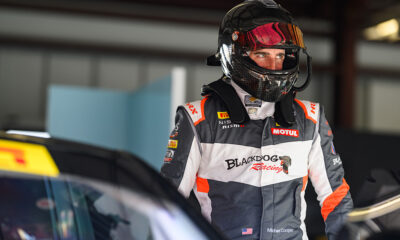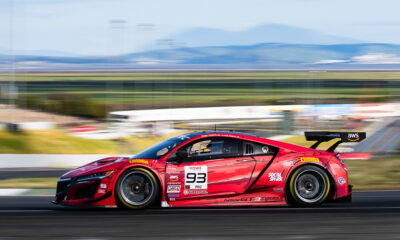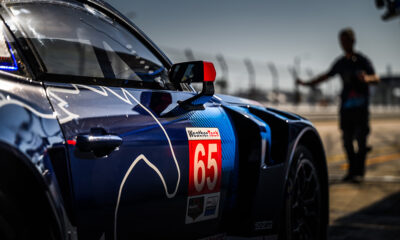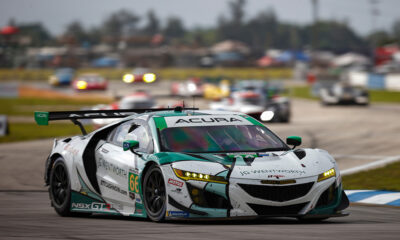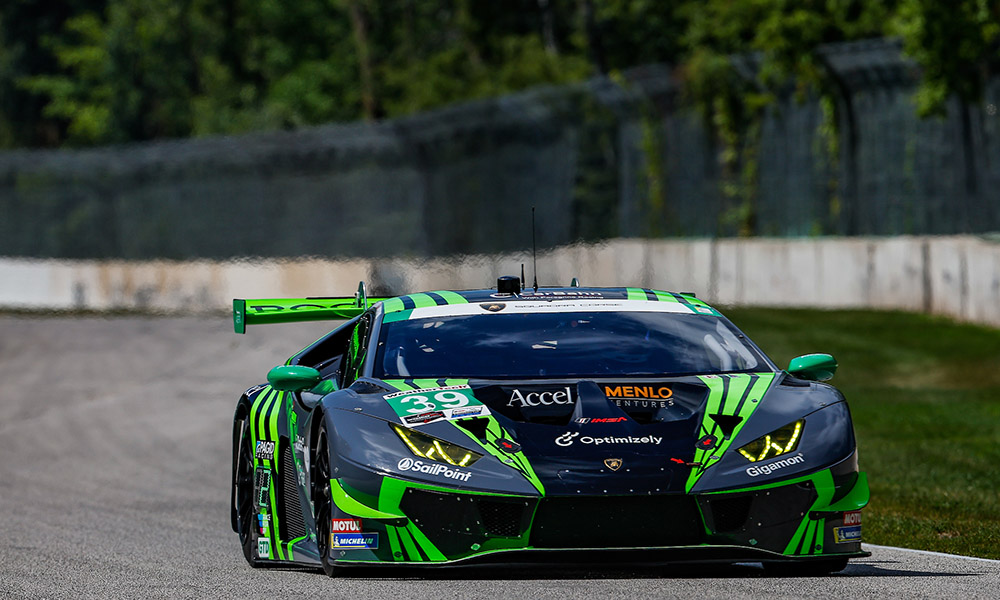
Photo: Brett Farmer/IMSA
Road America is a schedule favorite for me. “America’s National Park of Speed” is a 4.048-mile road course that winds through the Wisconsin woods and hillsides, with iconic corners such as “the Kink.”
This particular track feature is quite possibly the fastest corner we see all season, which is a challenge all drivers look forward to. It’s a 45 to 60-degree angle, more or less, with an approach above 140mph, and the road narrows at the exit with a wall that gets closer to the track edge on the way out.
At the start of the weekend, it always takes a few looks at the Kink before “full send” can be applied (a term where drivers take every ounce of courage and experience with them into the full commitment that is required.)
The trouble is, the GT3 machinery makes a good amount of aerodynamic downforce, which is reliant upon the floor of the car’s angle to the ground.
The Kink is fast enough that you are relying on that aero downforce to maximize the rolling speed through, but if you lift off the gas at the wrong time, the rear of the car goes up, the front goes down, and the car slides, resulting in infamous peril that so many drivers and cars have experienced in the history of Road America.
As a team, we entered this race coming off the momentum of a podium finish at the previous round in Lime Rock Park.
As a personal favorite of my teammate and I, we were personally motivated to bring an extra ounce of attack to this lovely circuit and shake another podium out of the tree. Robert set the tone by qualifying a solid third, 0.2 seconds off the pole, while nine cars were within 0.6 seconds. Over four miles of racetrack, I cannot express how close this is.
As the green flag dropped, Robert had a fantastic anticipation of the start, and got a run that allowed him to secure P2 in the first corner.
It was a mega move that put some GTD Pro cars between he and the rest of the GTD field, which acts like a cushion since it’s so hard to pass organically here.
As the race unfolded, a rainstorm began to bear down on the four-mile road course, and created a tricky decision for all engineers. The rain fall wasn’t hard enough to make the tire choice clear.
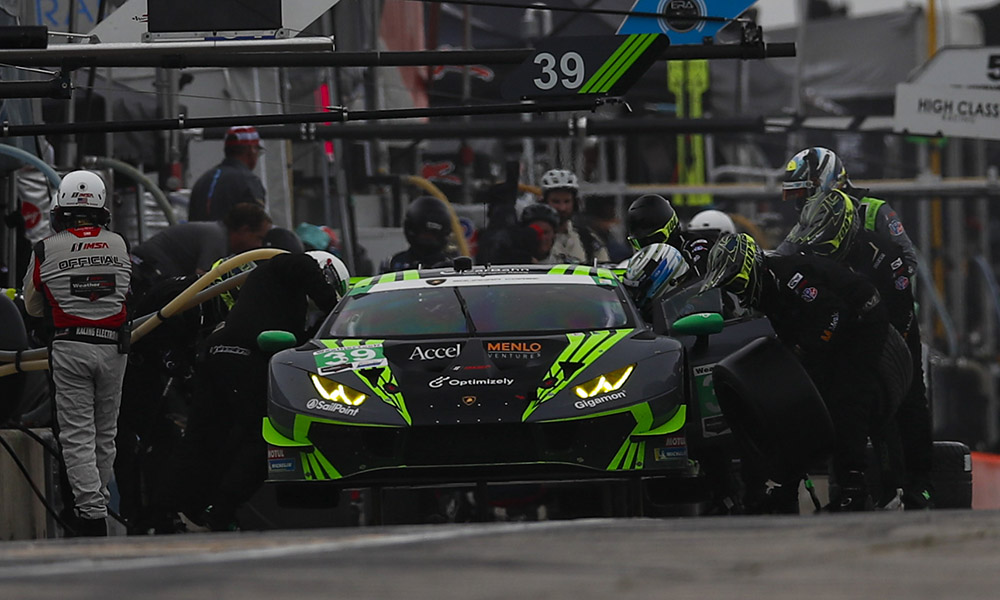
Photo: Jake Galstad/IMSA
At the first stop under yellow, some teams went on slicks, and some went on rains. Before the conclusion of the yellow procedure, the rain had picked up and our decision to take new slicks seemed like it might have proved to be the wrong one.
The race went green again, and it was clear who had chosen rain tires and who was on slicks with the wet circuit. Robert did his best to hang on to our No. 39 Lamborghini as it squirmed and slid around the 14-corner circuit.
Shortly thereafter, I was given the signal from our engineer to put the helmet on, which means I have less than five minutes to get ready for the remainder of the race in the car. Roughly 1 hour and 45 minutes remained, to be exact, which is something that I train for as a driver.
I try to be able to double the maximum time I WOULD spend in a car at once with cardio or physical exertion every so often. This means a four-hour bike ride, or a four-hour run needs to be achievable. If not, I know I am going to suffer in the car at some point, which lessens my focus and ultimately my speed on track.
Robert comes into the box, sliding long on the slick tires and wet pavement, I run and jump in the car. I see the signal to leave and struggle to get all my tasks done in under 20 seconds of pit box time.
I take off from the pit box with a twisted radio cable, and the belts not tight. As I find the fast lane at 60 kph, I tighten all of the belts, and I find on my left shoulder belt tug, a decent pull to my helmet. My radio cable was twisted under my left upper belt.
No time to fix it. I tighten it the majority of the way, get to the pit lane exit line and remove the speed limiter.
The rear tires lit up with a fury and then bit, launching me forward into Turn 1. I hear over the radio, “the leader is on hot tires in Turn 14 now, we need you to push.” I tried to forget about the left shoulder tangle, and started pushing the Michelin wets to their cold temperature edge of adhesion.
A few laps later, I had settled into a wet track and rain tire pace, matching or slightly better than the leader, meaning going a lap down was no longer a threat. And just like that, another yellow came out and brought us back into the fold by collecting the field.
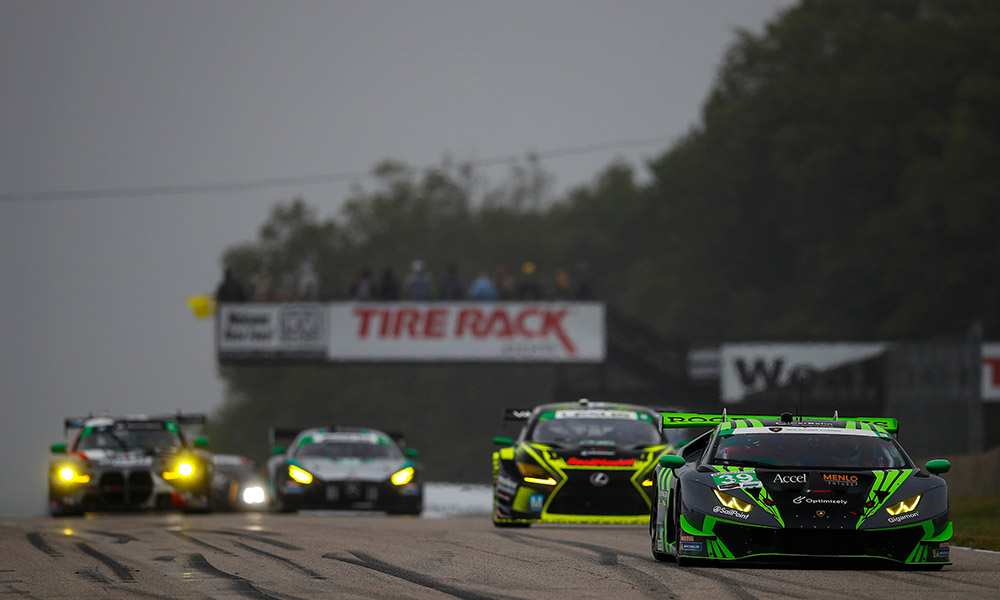
Photo: Jake Galstad/IMSA
Yet another yellow, closer to the end of the race this time, divided the grid with people pitting to splash fuel and take tires for the dash to the checkered while myself and a handful of others chose to stay out and gamble on the fuel burn and time remaining with used tires.
As we restarted with just under 40 minutes to go, I was told that I needed to save fuel, yet we were P4 and chasing the No. 12 Lexus, No. 96 BMW and No. 57 AMG. As I started to pressure the Lexus, the team informed me that I was still burning too much fuel and needed to increase my fuel save.
I elongated my coasting into the brake zones which made pressuring the No. 12 even harder, yet a few laps later the 12 was challenging the 96 BMW and they had light contact heading into one of the biggest brake zones of the lap.
I saw my opportunity unfolding, so I relaxed my leg from the brake pedal and ABS usage to let my Lambo roll into the brake zone a bit more, then I called for an extra downshift with the left paddle—down into 1st gear—and used the engine braking to help rotate and slide my No. 39 to a late apex while the 12 and 96 were locked in battle.
Early throttle leaving the slow corner in 1st gear created a bunch of wheel spin, I caught the rear and got a run that would ultimately let me pass the 12 and 96 at the entry of the next corner. Two-for-one passes don’t happen often, but with the 96 turning into the 12 at the apex, the BMW spun off at Turn 5, the 12 struggled to get rotated and I was able to capitalize.
With another 20 minutes of nail-biting fuel saving while trying to maintain a gap to the No. 12 Lexus behind me, I was counting down the minutes. The team informed me that if the DPi cars passed me, it would force us to run another lap after time expired and we would run out fuel.
Luckily, with eight minutes left on the clock, one of the DPi cars went off in the Kink and hit the wall, damaging his car and leaving carbon shrapnel all over the pavement. Full course yellow.
This was just what we needed to make it to the end and second place was ours. For the second race in a row, Rob and I brought home a piece of hardware. From the front, to the back, to the front again.
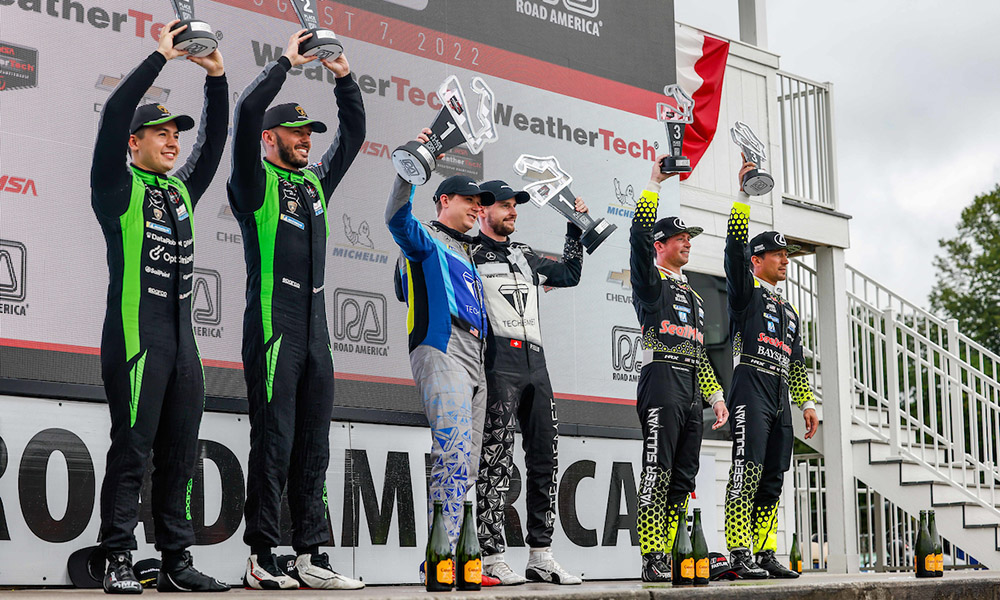
Photo: Brett Farmer/IMSA




















